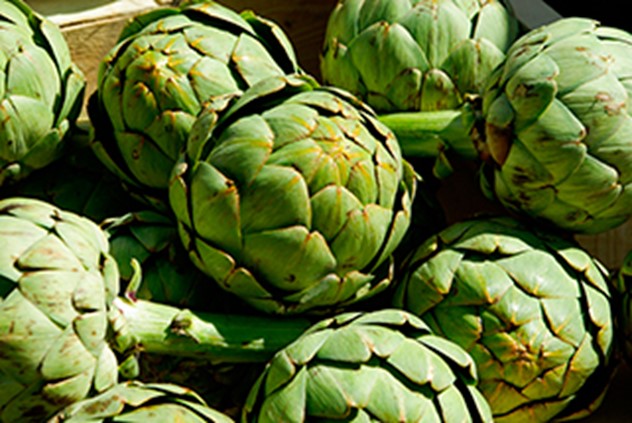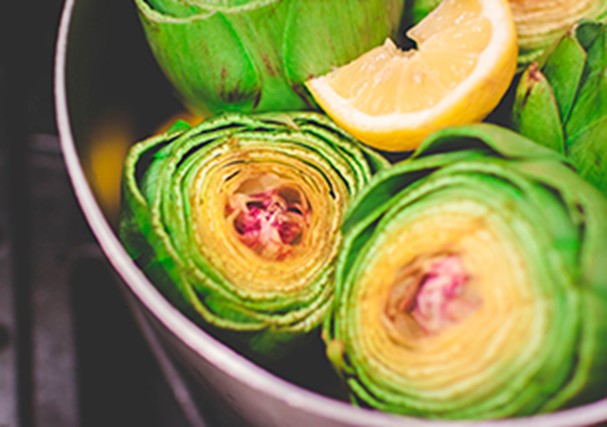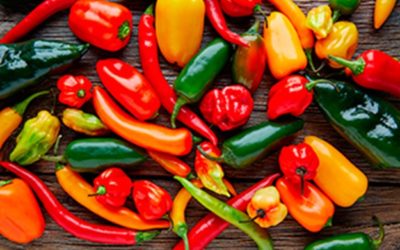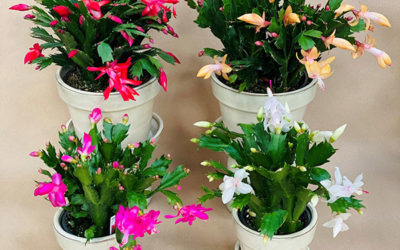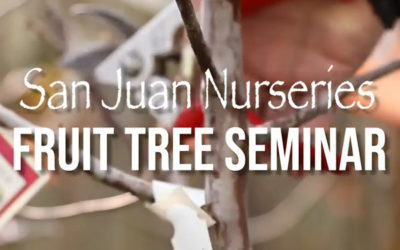Artichoke: Sow and Grow Guide
General Information
Whether grown for the edible flower bud or as a unique, 5′-6′ ornamental, artichoke plants are as beautiful as they are delicious. Artichokes are grown as perennials in USDA zones 7-10 (zone 6 with heavy mulch), and as annuals everywhere else; although some gardeners in cold climates grow artichokes in large pots that get transferred to a protected area, like a garage, during winter. Expect 2-3 primary buds the first year, followed by a flush of 5-7 secondary, smaller buds. Perennial artichokes will bear fruit for 4-5 years, getting larger and more productive as time goes on. If buds are not harvested to eat, they will turn into beautiful, thistle-like, purple flowers-a sight to see! Lovely in large flower arrangements or autumn harvest baskets. Flowers form in late summer, much to the joy of bees, moths, and butterflies.
The trick to getting the yummy vegetable is to start plants early, subjecting them to vernalization (a cold period) of at least 2 weeks growing at 40°-50°F, which triggers flowering later in the season. In USDA zones 7-10, winter can provide natural vernalization, but in colder areas, hardening off and transplanting your seedlings before temperatures warm up (giving them 2 weeks below 50°F but above freezing) will also vernalize your plants. Alternatively, if you have an indoor, temperature-controlled area, growing them between 40°-50°F under grow lights for 2 weeks will also work.
General Sowing
When to sow outside: Cold Climates: Not recommended. Mild Climates: Sow in fall for harvest the following spring.
When to start inside: RECOMMENDED. Cold Climates: Sow 12 weeks before your average last spring frost date. Ideal soil temperature for germination is 70°-80°F.
Indoor Sowing
Containers
Use a lightweight, seed-starting mix/media (sterile, and lighter than potting mix), and sow artichoke seeds 1/4″-1/2″ deep in 4″ biodegradable pots to avoid taproot disturbance. Sow 2-3 seeds per 4″ pot.
Thinning
Thin to the strongest plant once leaves appear (clip extra plants at the soil level using scissors). The strongest plant may not be the tallest; look for thick, strong stems and deep color. Even with careful selection of seed, a small percentage of artichokes may sprout stunted or albino due to their genetic diversity. Clip out these ‘off types’ in the seedling stage too. By thinning early, you minimize the negative impact of crowding, like stretching for light.
Transplanting
Harden off seedlings after four true leaves appear. Hardening off is the 7 to 10 day process of introducing pampered seedlings to the intense, outdoor sun and temperature swings. Read our article for hardening-off instructions. Transplant 4 weeks before average last spring frost, or in mild climates, 6 weeks before average first fall frost. Transplant into rich, well-drained soil, in an area with full sun (6 hours or more, unless extremely hot, then provide some afternoon shade). Be gentle, to avoid disturbing the taproot. Transplant 4′ apart; they do best when they are not crowded. Growth will be slow at first, but pick up once established. Protect tender seedlings from frost.
Optimal Grow Conditions
Soil
Rich, well-drained slightly acidic soil.
Water
Artichokes perform best with moderate water; drought can cause premature flowering, while soggy soil can rot roots. They are heavy feeders, and a monthly side dressing of quality, aged compost or balanced fertilizer can be beneficial.
Exposure
Choose an area with full sun (6 or more hours per day). Protect from intense sun; provide some afternoon shade.
Fertilization
Very heavy feeder. Prepare bed with generous amount of compost. Side dress every 3 to 4 weeks.
Harvesting
Harvest your artichokes when buds are still closed, just before they begin to open (opened heads are tough). Cut the central bud first by cutting the stem with a sharp knife 2″ below the bud. After harvesting, side shoots will produce smaller harvestable buds (a unique delicacy!) Artichokes are best eaten fresh, immediately after harvest.
Storage
If you must store your harvest, dunk artichokes in ice water, dry, and store in a sealed container in the refrigerator for up to 2 weeks. Rapidly cooling the artichokes prolongs their storage life.
Fall Care
Cold Climates (USDA zones 6 and 7): Prepare plants for winter by cutting to about 8″-12″ above the ground. Cover with plenty of mulch (about 2 or 3 times the height of the plant). An inverted pot or basket over the mulched plant provides extra protection. Cover with additional mulch. You can also grow artichokes in a large container and move into a basement or garage to overwinter. Even when mulched, plants are hardy only to about 20°F, so they may not survive when temperatures are too cold for extended periods during the winter. Mild Climates: In autumn, cut plants to the ground and cover with mulch.
How to cook
Cut off the stem very close to the bud. Boil or steam buds for 35 to 45 minutes until tender, when a fork easily pierces the underside of the bud where the stem was cut off. Serve with butter or a little olive oil and lemon.
More Articles from San Juan Nurseries
Pepper: Sow and Grow Guide
Pepper: Sow and Grow GuideGeneral Information Peppers are classified as either hot (chile) or sweet. WHY PEPPERS ARE HOT: A compound called capsaicin gives hot peppers their heat. Capsaicin occurs mostly in the light-colored ribs (also called pith) inside the pepper....
Christmas Cactus Going Fast!
Christmas Cactus Going Fast!Get Them While They Last! Everybody loves them - and they're selling out fast! Contact us NOW to see what we have left. Some colors are already sold out, but we still have some here - get them while they last! Christmas...
Fruit Tree Seminar
Saturday, February 15th @ 1pm Our Fruit Tree Seminar is on Saturday, February 15th, 1pm at San Juan Nurseries! Come get the dirt on all aspects of fruit tree care from our certified arborist, Scott Rubenstein!

